After Hasty Demo of Bed Stuy's Dangler Mansion Short Circuits Landmark Process, LPC Speaks Out
Relying on out-of-date information about the status of a demolition permit from the DOB, Landmarks delayed a vote at the request of the developer in an attempt to ensure a successful designation, LPC Chair Sarah Carroll said at a City Council hearing Tuesday.

The demolition of the Dangler mansion at 441 Willoughby in process on July 21. Photo by Anna Bradley-Smith
Just days before developer Tomer Erlich of Brooklyn 360 demolished Bed Stuy’s venerated Jacob Dangler mansion, he asked the Landmarks Preservation Commission at a July 12 public hearing to delay the landmark designation process. He needed, his lawyer said at the hearing, more time to explore his options if the mansion were landmarked.
At the time, Erlich had a complete application for a demolition permit for the mansion sitting with the Department of Buildings and the demolition permit was just seven days away from being issued, but that fact was unbeknownst to LPC, the agency’s Chair Sarah Carroll said at a City Council hearing on Tuesday.
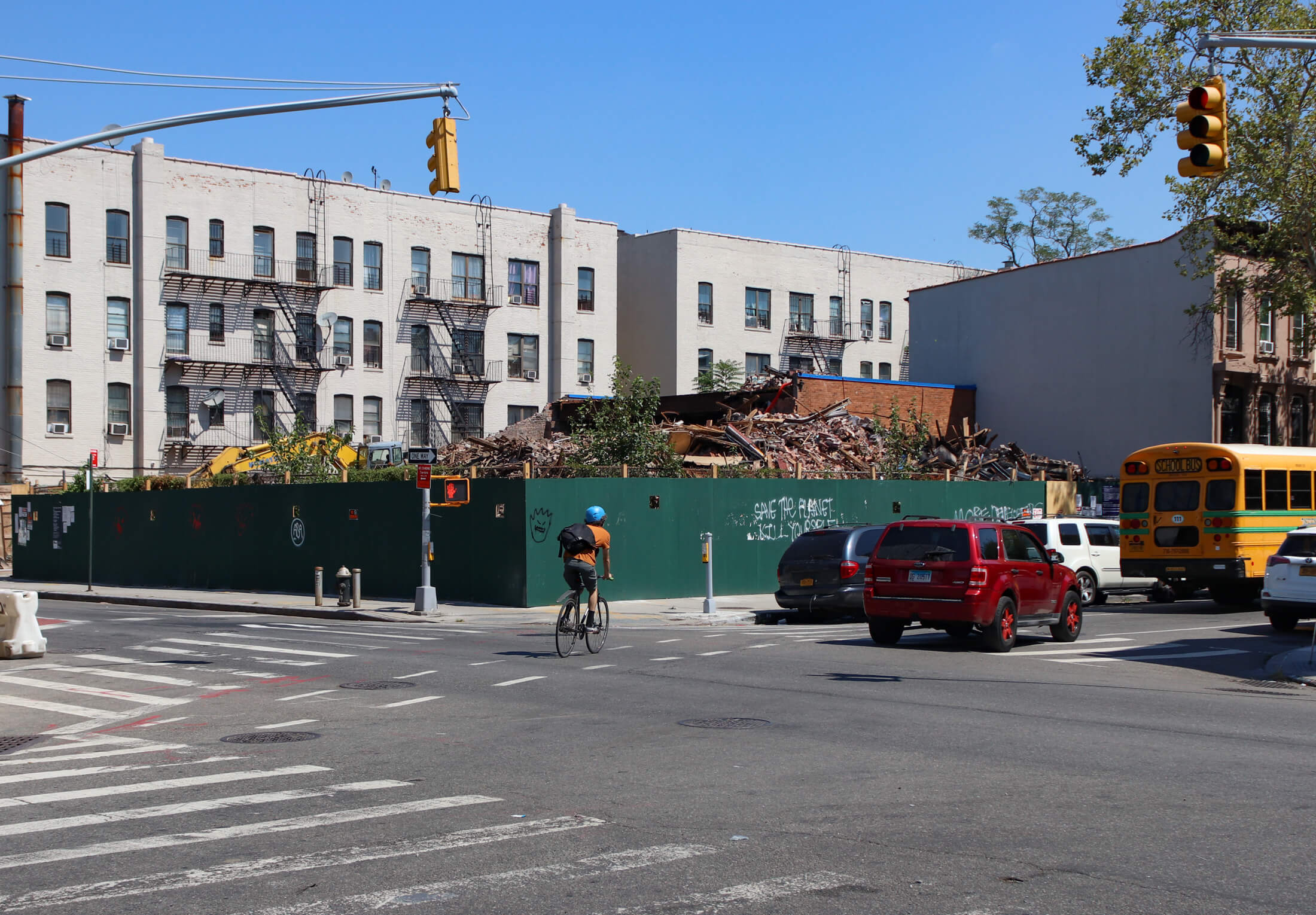
At the hearing, held to review Carroll’s appointment to chair LPC for a second term, she said that due to DOB’s lagging permit system, neither she nor her staff were made aware Erlich’s application for the demolition permit had been completed on June 8, one day after the mansion at 441 Willoughby Avenue was calendared for designation by LPC. They were also not aware, she said, that the 40-day DOB permit pause for a property under consideration for landmarking had even kicked off (let alone almost expired). The 40-day period begins when an application for a DOB permit is complete, not when the LPC calendars a building.
“When we discovered the error I think everybody stepped back, it took multiple agencies working together to try to discover what happened and I think we didn’t want to comment right away until we understood,” Carroll said at Tuesday’s hearing.
When asked by local City Council Member Chi Ossé what the “technological glitch” was, Carroll said the DOB system was not up to date with the latest filings. The online database for demolition permits, Buildings Information System, is not real time and frequently lags the current status of project paperwork. This limitation has existed for years and is well known. When Brownstoner asked LPC after the hearing if the glitch was related to BIS, spokesperson Zodet Negron said via email Saturday: “The issue wasn’t a lagging issue or a ‘glitch,’ and it was unrelated to BIS and DOB Now,” referring to the DOB’s two public-facing online systems.
Designation for the Jacob Dangler mansion had seemed imminent just days before its demolition. At the public hearing, all but four of the speakers (the owners, their counsel and the counsel for the developer) adamantly supported landmarking, and locals shared stories about how the 19th century French Gothic Revival-style house that had anchored the block for generations was culturally, socially and historically significant to the community — as well as architecturally important.
However, Carroll closed the July 12 public hearing on the mansion’s landmarking without voting on whether or not to designate the 125-year-old structure. At the hearing, Erlich’s lawyer, Eliad Shapiro, said the LPC had prejudiced Erlich’s right to demolish the building in the lead up to calendaring by delaying the LPC letter needed to obtain a demo permit. Then, he said, the agency rushed the designation process and had not allowed Erlich time to retain an architect to determine the merits of landmarking.
He ended by asking Carroll to adjourn the hearing, which she did.
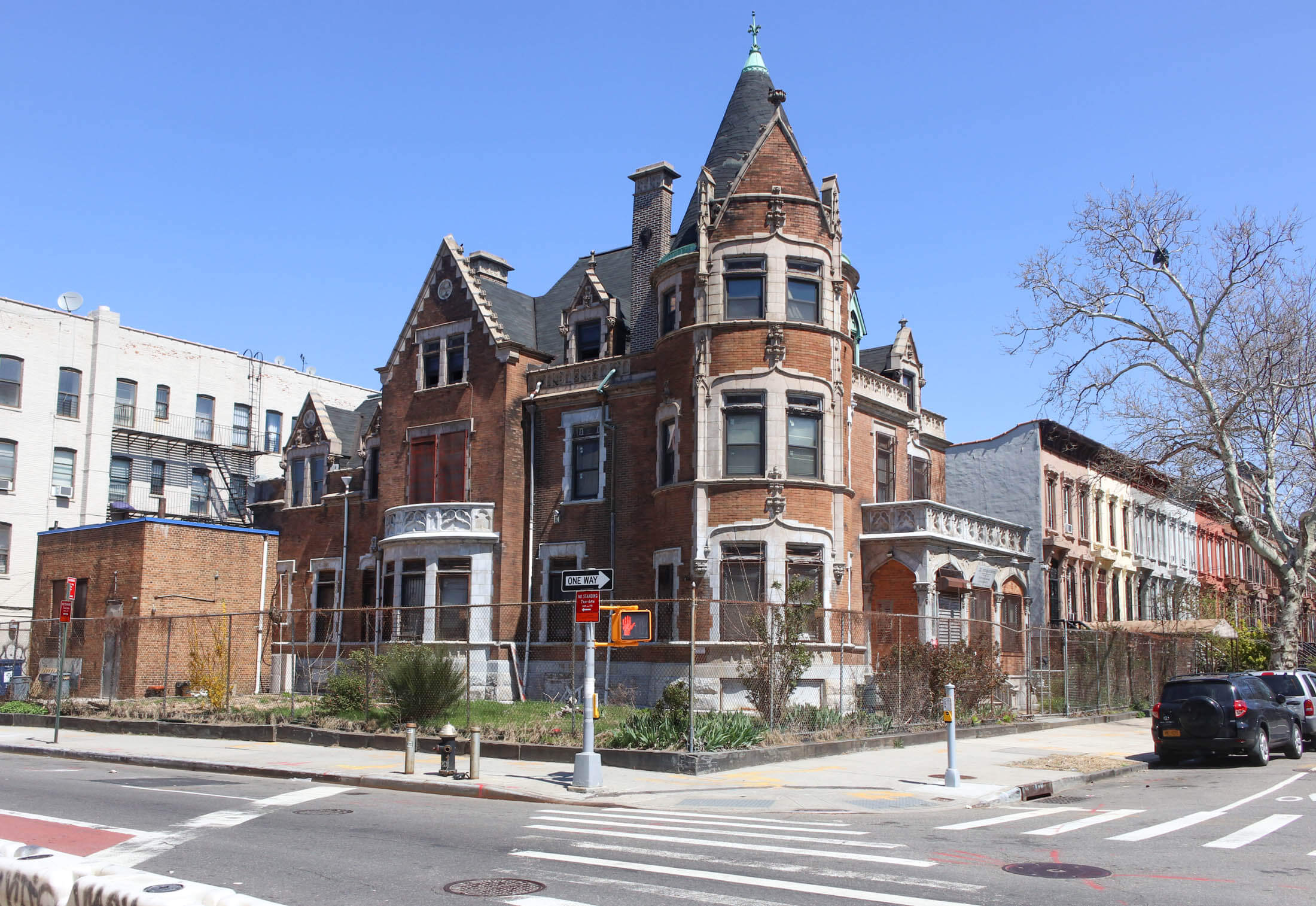
Just days later, in accordance with city rules, Erlich obtained the demolition permit. The delay of the vote that his lawyer had asked for at the hearing gave him the opportunity to tear down the mansion, which he did as quickly as possible by illegally using an excavator, before it could be landmarked.
“It was a real personal and professional setback for me,” Carroll said at Tuesday’s City Council hearing. Carroll said she and her staff knew there was a risk of the property being demolished given that Erlich started the application process for the demolition permit in March, and the Landmarks team worked fast to get the property through the landmarking process.
“In my concern to ensure that the designation would be successful, in the event of the inevitable lawsuit after designation, we relied on that information from the Department of Buildings and believed we had more time to consider that testimony and bring it back for a vote,” Carroll told City Council members.
Given the high and well-known risk of demolition, some commissioners expected to vote to designate the mansion on the day of the July 12 public hearing, sources told Brownstoner. Deciding to vote is at the discretion of the chair.
Although it is rare for commissioners to vote on designation on the day of a public hearing, there is precedent. In 2018, commissioners designated Sunset Park’s Dr. Maurice T. Lewis House the same day as the public hearing, given the immediate danger of demolition. At the time, current LPC Chair Sarah Carroll was LPC’s executive director, meaning she was there to witness the quick action.
It was also the case in 1985, when commissioners voted to landmark the Upper West Side’s Normandy Apartments the same day as the hearing due to a contentious battle that was erupting between residents over window replacements.
However, there was no such vote on the Dangler mansion and, on July 21, Erlich’s crew almost completely demolished the historic mansion in under three hours. As the Jacob Dangler mansion was being demolished, an LPC staff member told Ossé that the commission had held off on the designation vote at the request of the developer, Ossé told Brownstoner.
By the end of the day, the site was the subject of a stop work order, and seven excessive debris and safety violations had been issued to the general contractor and the construction superintendent.
Locals search for answers
Willoughby Avenue residents did everything right to save the mansion at the last minute, even moving actor Ed Norton to testify in favor of its preservation, but, as a Brownstoner commenter said, “This should have been landmarked long ago.”
After the demolition, preservationists called for an investigation into what happened to restore trust in the landmarks process and make sure action is taken to avoid a similar situation in the future.
“As a community, we were ignored, disregarded and disrespected by the developer Tomer Erlich of Brooklyn 360 Realty. We are equally disappointed in the Landmarks Preservation Commission,” Willoughby Nostrand Marcy Block Association, the group largely behind the landmarking effort for 441 Willoughby Avenue, wrote in a statement.
The group added that despite overwhelming support for landmarking, LPC did not move fast enough to designate the property, allowing for its demolition, which they said was done “without regard for health, safety and environmental impacts” and “was egregious and unacceptable.”
“Since then, the LPC and the Mayor’s Office have refused to articulate why this was allowed to happen. The entire community – including elected officials, neighbors and preservation advocates – feel spurned by the lack of transparency. Such actions do not alleviate the community’s (and public’s) lack of trust in the LPC and the landmarking process.”
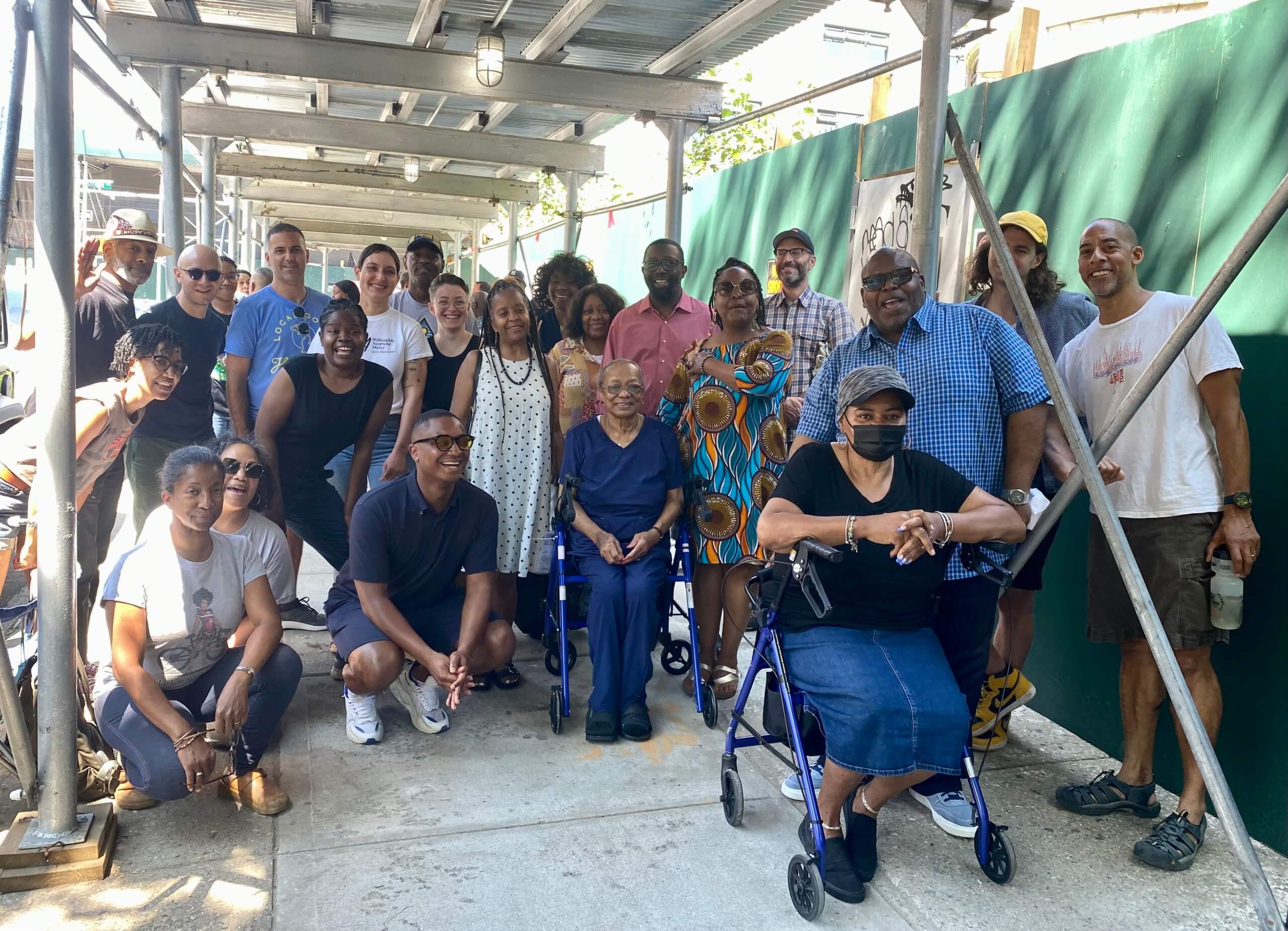
A rep from the block association said the group did not believe Carroll’s Tuesday testimony, but added if it was true “then the level of incompetence here deserves some accountability not a contract renewal.” The rep added that the community remained vulnerable to the effects of the demolition and development on the neighborhood, including exposure to asbestos and an increase in rats.
“It’s easier to pay the fines than to play by the rules. Where does that leave us? We want some systemic change to happen here and the maximum penalties be enforced.”
At Tuesday’s confirmation hearing, Carroll said that what happened was a “very unusual circumstance” and that subsequently DOB and LPC had done a “deep dive.”
“Both agencies, other staff from City Hall and our deputy mayors were trying to figure out what happened and what we can do to ensure that it doesn’t happen again,” she said. “Working with our colleagues at Department of Buildings, we have developed a short-term plan to ensure that it never happens again, with a longer term plan that works into their database upgrade, which would ensure real time information be shared.”
Excavator used for demo, asbestos on site
Following the demolition, Department of Environmental Protection enforcement staff inspected the site, ran tests and found asbestos in the roof flashing, despite paperwork submitted by certified asbestos investigator Lyke Ohriala saying there was no asbestos material on site, a rep for the agency told Brownstoner. The DEP inspector also issued a stop work order, which allows for abatement work by a licensed asbestos abatement contractor.
The rep said the asbestos found on the site posed little risk to locals because it was in flashing cement. Because it is in a tightly bound matrix of the sticky, tar-like material, it’s difficult for it to become airborne. In this case, most of the flashing was attached to bricks, the rep said, and if it does come off the bricks it is in large pieces and will not be released into the air.
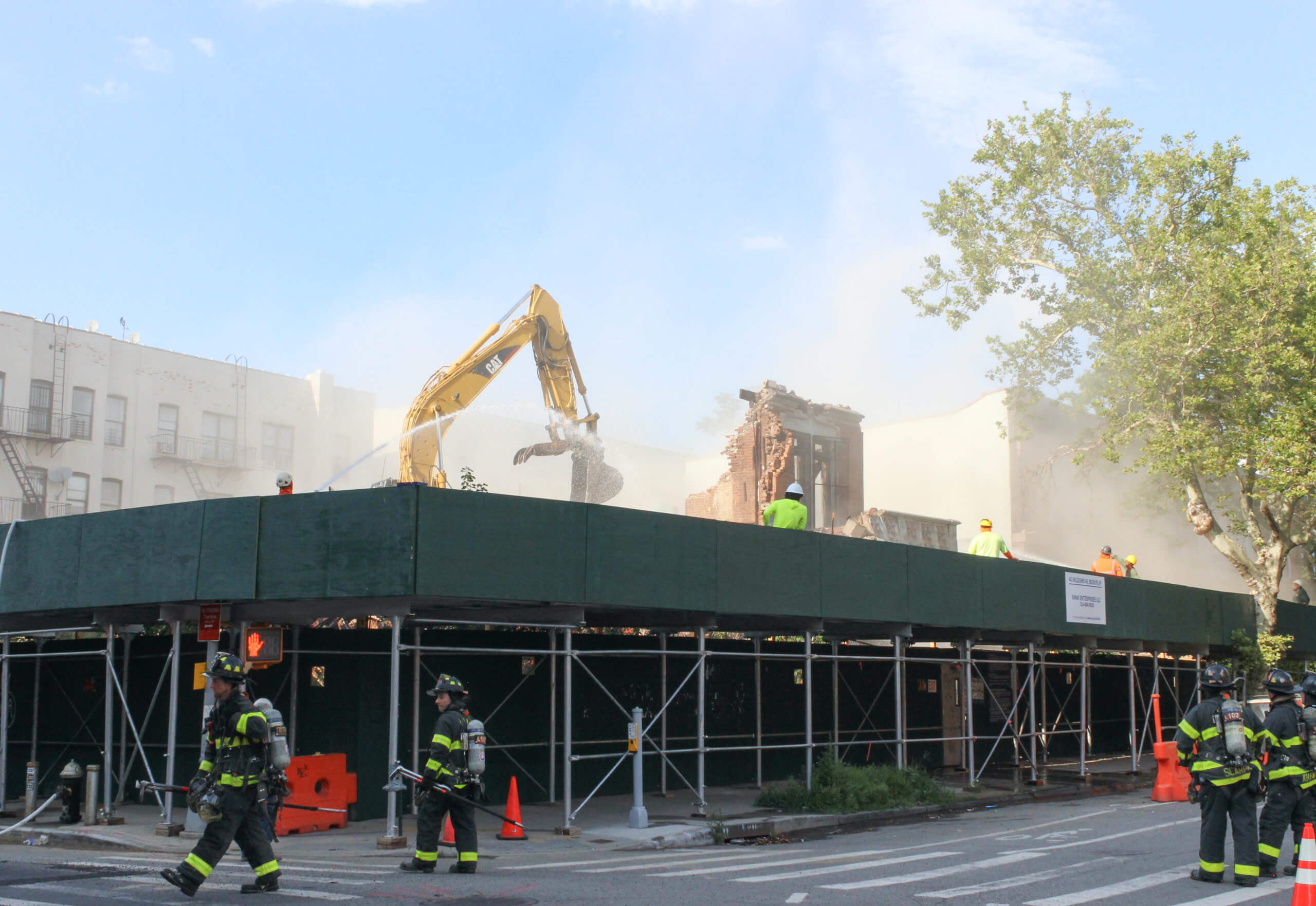
Ohriala, the certified asbestos investigator used by Erlich, currently has several violations and infractions pending at the city’s Office of Administrative Trials and Hearings, which, if sustained, will be followed by license suspension proceedings, the rep added.
Since DEP staff discovered the asbestos contamination and issued the stop work order, the property owner has had to hire an air monitor, and air monitoring is now in place and operating, the rep said. The rep added DEP staff will continue to make spot inspections to ensure abatement is completed correctly.
DOB also issued a stop work order on the site after the demolition because workers had used an excavator to knock down the building without the special mechanical equipment permit required, city officials told Brownstoner. (Using an excavator only to remove debris from the site is allowed under the order.) Without having illegally used the excavator, demolishing the building by hand would have taken much longer.
A hearing for the seven violations has been set for November 23, and if the violations are upheld, the general contractor and construction superintendent (but not the developer) could face fines up to a combined $160,000.
Advocates call for transparency
In the weeks following the demolition, LPC did not respond to multiple requests for comment. Instead, City Hall has taken leadership on public communication, something that has further angered and confused the local community who had been in conversation with LPC leading up to the demolition.
A rep for City Hall told Brownstoner it was not involved in the landmark consideration process, quelling speculation the mayor had interceded. Even so, Mayor Eric Adams reinstated Carroll to the LPC chair position just weeks after the debacle, signaling his ongoing support. The City Hall rep told Brownstoner it was common for City Hall to help coordinate across agencies.
In a statement, the agency said: “We have taken immediate steps to prevent such issues in the short term, and as part of Mayor Adams’ efforts to modernize operations at city agencies, the administration is already developing a permanent technology solution that would ensure an error like this never occurs again.”
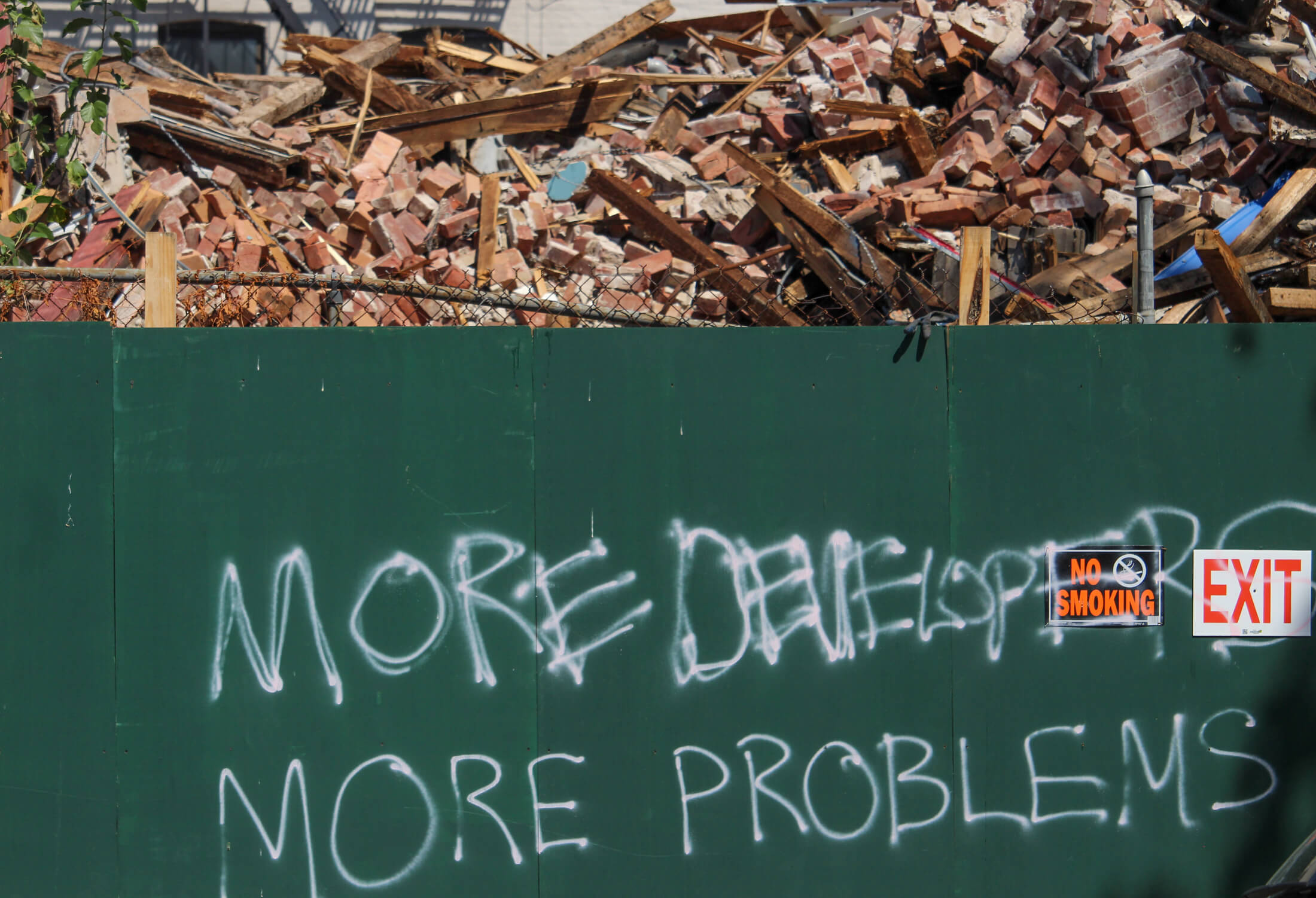
If Carroll believed the developer would hold off on demolition while he investigated the merits of landmarking, as his lawyer suggested, it is not the first time a good faith agreement with a developer has gone sour. In 1981, LPC declined to designate parts of the iconic Biltmore Hotel in midtown Manhattan, as the developer had entered into an agreement with New York Landmark Conservancy to re-create historic elements of the hotel that stipulated if the building was landmarked by LPC the agreement would not stand up.
However, the developers did not live up to their end of the deal by re-creating the historic elements promised, and instead paid the conservancy $500,000. At the time, as the Times reported, Brendan Gill, the organization’s chairman, said of the settlement: “It is not in my mind dirty money and it is not going to enrich us. It was an effort to gain something out of what to my mind was a memorable catastrophe that ought not to be repeated.”
Preservationists assailed the LPC for what happened at 441 Willoughby Avenue and said concrete steps must be taken to prevent a similar situation from unfolding again.
Andrew Scott Dolkart, Professor of Historic Preservation at Columbia University School of Architecture, Planning, told Brownstoner that if LPC is going to make a deal with a developer, “then they needed a very strict, legally binding promise that LPC’s council should have worked out with the developer and his council, with the DOB as part of the discussion.”
That has been done before, he said.
“DOB says that they had no other recourse but to give the demolition permit because LPC had not acted, so really it comes down to very bad judgment on the part of LPC either naively or on purpose,” Dolkart said.
According to preservation activist and author of “Preserving New York: Winning the Right to Protect a City’s Landmarks,” Anthony C. Wood, 441 Willoughby Avenue should have been “a slam dunk landmark designation and instead it became a demolition derby.”
“It is a real black eye for the city of New York. If this demolition is truly the result of some acknowledged lag in the BIS system, then shame on the Landmarks Preservation Commission, the Buildings Department, and the mayor for not having fixed it,” Wood told Brownstoner.
“Additionally, who is naive enough to trust a developer when they ask for more time to study the merits of designation when their real intention is so obvious? How is it that the developer could outsmart this administration? Is this what making New York a city of ‘Yes’ (this administration’s stated goal) going to look like? Let’s hope not. We need the City Council to hold an oversight hearing to get to the bottom of this and to make sure it never happens again.”
Prior to Tuesday’s hearing, Historic Districts Council head Frampton Tolbert told Brownstoner the lack of transparency in the situation, and the fact LPC had yet to issue a statement or answer for what happened, has left everyone feeling a lack of trust in the agency and the landmarks process in general.
HDC said in a public statement in the weeks following the demo: “Even now the LPC refuses to take responsibility for the demolition and refers questions to the Mayor’s Office. The entire community, including elected officials, neighbors and preservation advocates, feels spurned by the lack of transparency. Actions like this only continue to feed community lack of trust in the LPC and the landmarks process. Our city deserves better.”
Talbot added the situation was bigger than 441 Willoughby Avenue. “It is about the transparency of the landmarks process. We don’t want other communities to feel like this could happen to them.”
Real estate scams often lead to demolition
Demolition of historic buildings is no new trend in Bed Stuy or elsewhere in Brooklyn, particularly in many of the borough’s historically Black and brown neighborhoods. Predatory lending, foreclosure, deed theft and other scams continue to plague the area and often result in properties falling into the hands of developers who tear down longstanding homes to build bigger and more profitable apartment complexes.
The story of the mansion is no exception. The current owners, who have struck a deal with Erlich to sell him the property, are a Masonry chapter of Black women from Bed Stuy and surrounding neighborhoods. The chapter, the United Grand Chapter Order of the Eastern Star, has owned the mansion since 2003. The property has a $2.3 million foreclosure lien and the organization faces possible bankruptcy, reps for the chapter said at the public hearing.
The fraternal organization claimed in court documents the debt stems from fraudulent loans taken out by members of the chapter without the organization’s approval, as the Wall Street Journal was first to report. The group said the loans issued by Advill Capital LLC were part of an “equity-stripping foreclosure rescue scam.”
However, a rep for lender Advill Capital LLC told WSJ the claims of mortgage fraud are an attempt to forestall foreclosure, and he added that demolishing the building also violated the terms of the mortgage. Brownstoner reached out to the rep for comment, but did not hear back. The foreclosure case is ongoing.
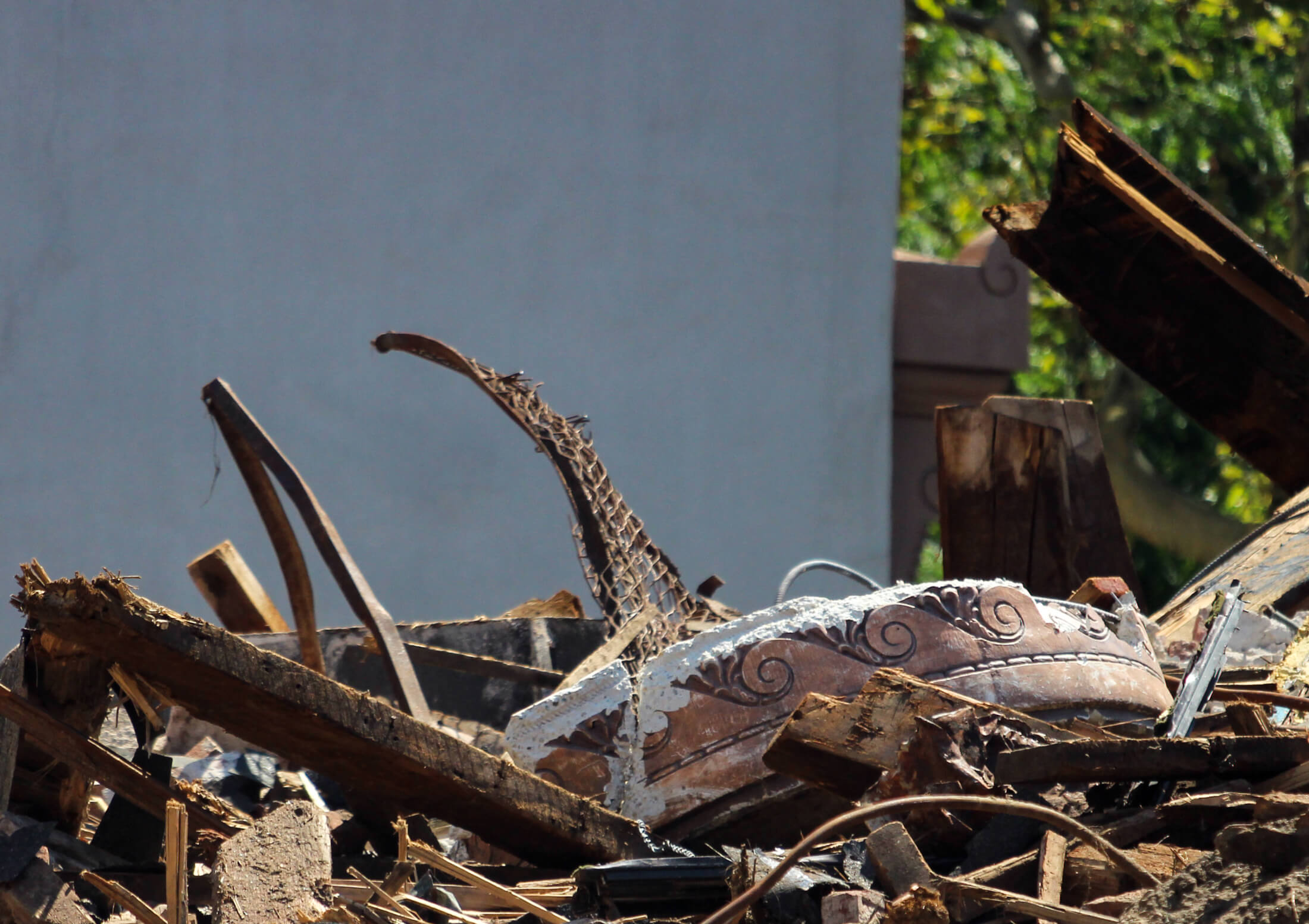
According to the WSJ, United Grand Chapter signed a contract in 2021 to sell the building to Erlich for $4.3 million. Any sale would need to be approved by a state court and Attorney General Letitia James, a native Brooklynite who represented a neighboring district when she was a City Council member. The process is designed to prevent abuse and personal enrichment at the expense of the organization. Disclosure of the terms and conditions of the sale and how the money will be allocated is required. Board approval (and, in some cases, membership approval) is also required.
As well, anyone may testify at the court hearing and “show cause why the application should not be granted” by the court, according to the AG’s office. It typically takes three months for sales to be recorded and appear in online records. So far, city records show UGC still owns the house and court records show a petition for the sale is yet to be filed.
Although Erlich has not yet applied for a new-building permit with the city, he has said he intends to construct a 44-unit, seven-story apartment building on the site.
Environmental impact of demolition
Lauren Cawdrey, vice chair of the Willoughby Nostrand Marcy Block Association and a key organizer in the landmarking efforts, said LPC has still not contacted local residents despite the block association sending weekly emails to follow up on what happened.
Cawdrey told Brownstoner the community needed the city, and LPC specifically, to provide a timeline of events, and to show some accountability. She said it was “cowardly” for LPC to hide behind the Mayor’s Office and not speak about what had happened, especially after being responsive to locals until this point.
“LPC has a very soiled history with not taking action and there needs to be accountability,” she said.
Cawdrey also raised concerns, shared by other Willoughby Avenue residents and the wider community, about the environmental impact of the demolition. Brownstoner was on site for the demo and witnessed the clouds of dust that covered everyone and everything around the site. Cawdrey said the dust remained on the block for days, and there were real fears about its toxicity given the age of the building. Cawdrey said it was likely residents would test the dust.
She said she also fears that what she has characterized as a “disregard for community safety” shown by the developer will continue throughout the debris removal and subsequent construction. Locals have filed around 100 complaints to 311 about air quality, noise, safety issues and possibly illegal work since the building was demolished. DOB rep Rudansky said the stop work order was partially rescinded on August 9 to allow the contractors to only remove debris from the work site and perform housekeeping operations needed to keep the site in a safe condition.
“They are not allowed to perform any additional work at the site, other than debris removal and housekeeping,” Rudansky reiterated. He said recent inspections have found debris removal and housekeeping work have been in compliance with the partial stop work order, and no additional enforcement actions have been taken during recent inspections.
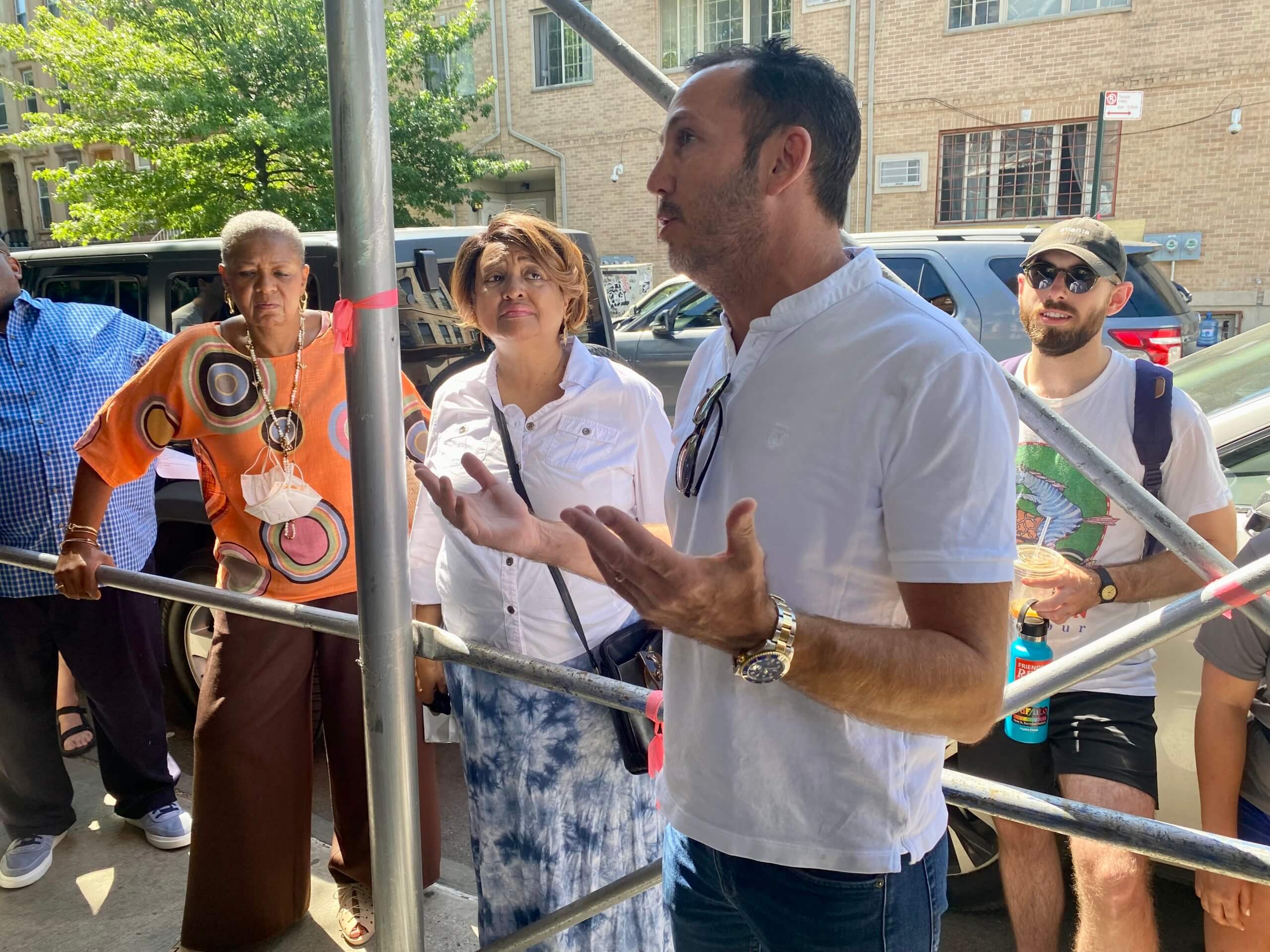
However, the violations issued all remain open in DOB records, he added, and the partial stop work order remains in effect. “To close the violations, the respondents must correct the unsafe conditions and also they must file a certificate of correction to the department for our review,” he said.
Meanwhile, Cawdrey has recently received a number of negative one-star reviews online for her small business from people with the same last name as the developer. When word of those reviews made its way to the community, Cawdrey said, she was overwhelmed by the number of people who jumped to her business’ defense.
Currently, the block association is organizing to determine which course of action to take. A rep said the group wants to see the building plans and be able to voice opinions on what replaces the lot. “A designated community space would be ideal but I don’t think that’s going to be an option for us,” the rep told Brownstoner.
The group ended its public statement, which it sent to LPC, by saying it will be “vigilant in preserving the spirit of fellowship and community that the Jacob Dangler house represented for us. We will hold all city, state and federal agencies serving New Yorkers accountable.”
“We demand both a response from the administration and a community meeting to discuss the importance of preservation and how this administration can support our goals of preserving the community’s history. Finally, we urge the Mayor’s Office to detail the action plan going forward by the Department of Environmental Protection and the Department of Buildings.”
However, Cawdrey said, the group has yet to receive a response.
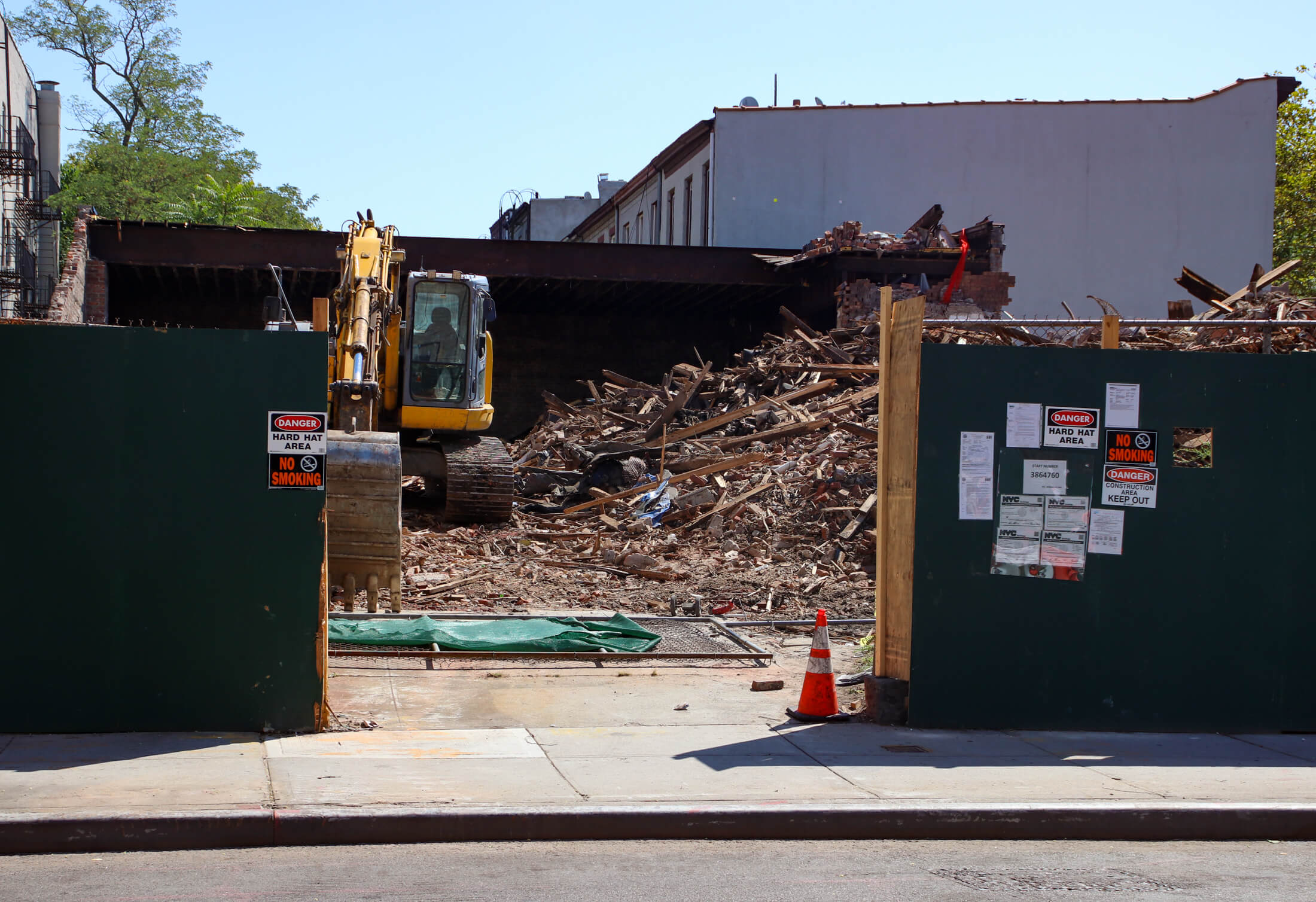
[Photos by Susan De Vries unless noted otherwise]
Related Stories
- Bed Stuy’s Dangler Mansion Razed in Hours. Now a Stop Work Order Has Been Issued (Video)
- Locals, Pols Overwhelmingly Support Landmarking Bed Stuy’s Dangler Mansion at LPC Hearing
- Council Member Ossé to Landmarks: Landmarking 441 Willoughby Avenue Is the Best Decision for All
Email tips@brownstoner.com with further comments, questions or tips. Follow Brownstoner on Twitter and Instagram, and like us on Facebook.





What's Your Take? Leave a Comment